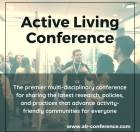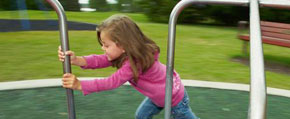We are pleased to announce an exciting new alliance between Active Living Research and GP RED to co-host and coordinate...
Does Exposure to Air Pollution in Urban Parks Have Socioeconomic, Racial or Ethnic Gradients?
Su, J.G., Jerrett, M., de Nazelle, A., & Wolch, J. (2011). Does Exposure to Air Pollution in Urban Parks Have Socioeconomic, Racial or Ethnic Gradients? Environmental Research, 111(3), 319-328.
Little is known about the levels of air pollution at public parks where regular exercise takes place or in park-adjacent neighborhoods where people have easy access to parks. In this study we investigated the ambient concentrations of criteria pollutants nitrogen dioxide (NO(2)), fine particulate (PM(2.5)) and ozone (O(3)) at public parks and in park-adjacent neighborhoods for metropolitan Los Angeles. Socioeconomic and racial-ethnic inequalities in exposure to the three criteria pollutants were also investigated using multiple linear regression models. In addition, differences in inhalation doses from breathing the three +criteria pollutants were investigated for the top and bottom quartile racial composition in the parks and neighborhoods. Our research showed that although public parks had on average the lowest pollutant concentrations of NO(2) and PM(2.5), they had relatively high O(3) concentrations. Park-adjacent neighborhoods, by contrast, had the highest NO(2) and PM(2.5) concentrations, but the lowest O(3) concentrations. Higher exposures to NO(2) and PM(2.5) were systematically identified for the lower socioeconomic position or higher minority population neighborhoods. For children and adolescents aged 6-15 engaging in high and moderate intensity activities in and around public parks, those from the top quartile of primarily Hispanic neighborhoods had much higher (63%) inhaled doses of NO(2) compared to the bottom quartile counterpart. PM(2.5) showed a similar but less pronounced pattern of inhalation doses. Evidence of socioeconomic and racial-ethnic gradients was found in air pollution exposure and inhalation doses in and around the urban parks in Los Angeles. This suggests that patterns of exposure inequality found in other environmental justice research are present in exposures in and around urban parks.
Related Tools & Resources
STAY UP TO DATE
RECENTLY ADDED TOOLS & RESOURCES
MOVE! A BLOG ABOUT ACTIVE LIVING
The "Active Living Conference" aims to break down research and practice silos and...







